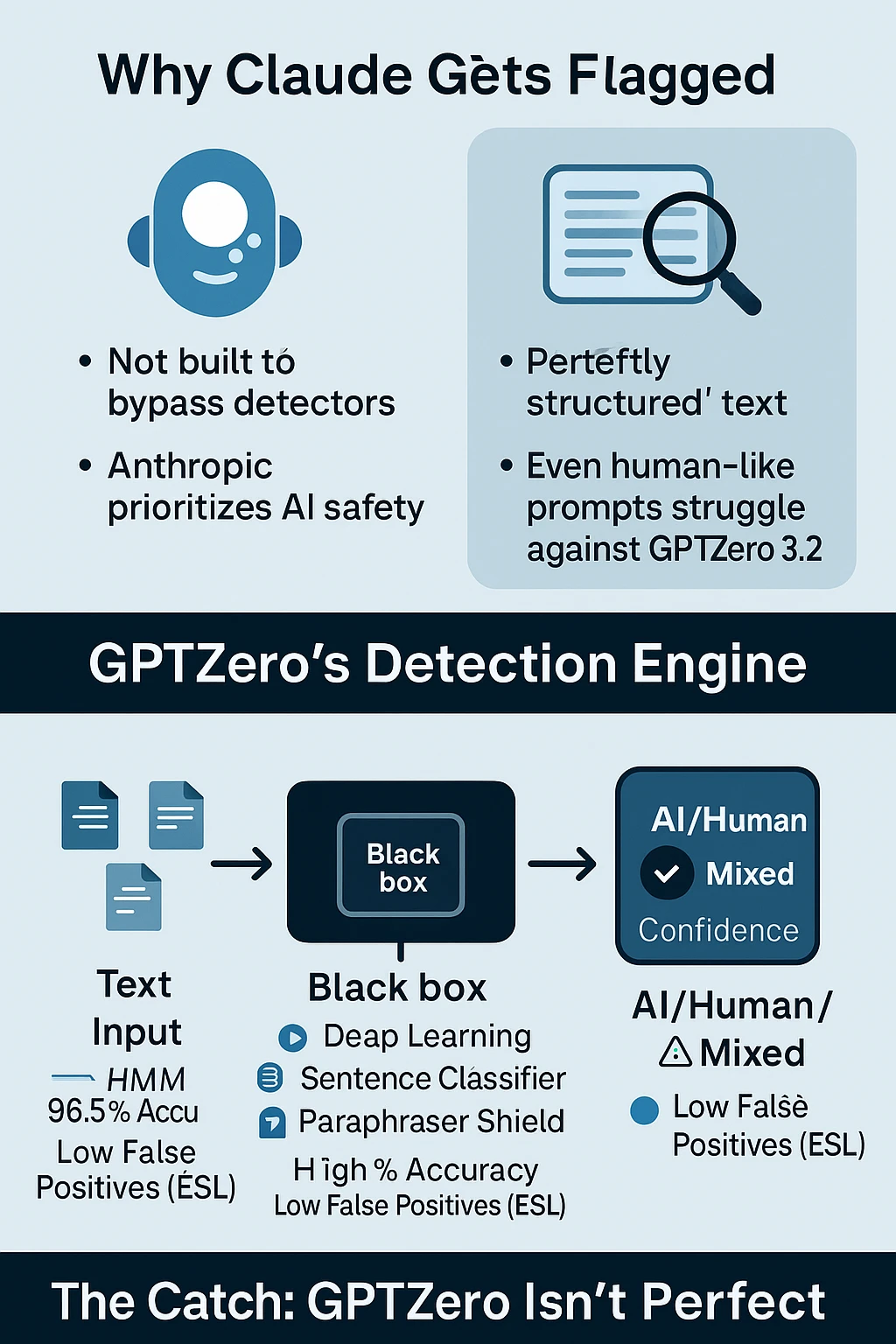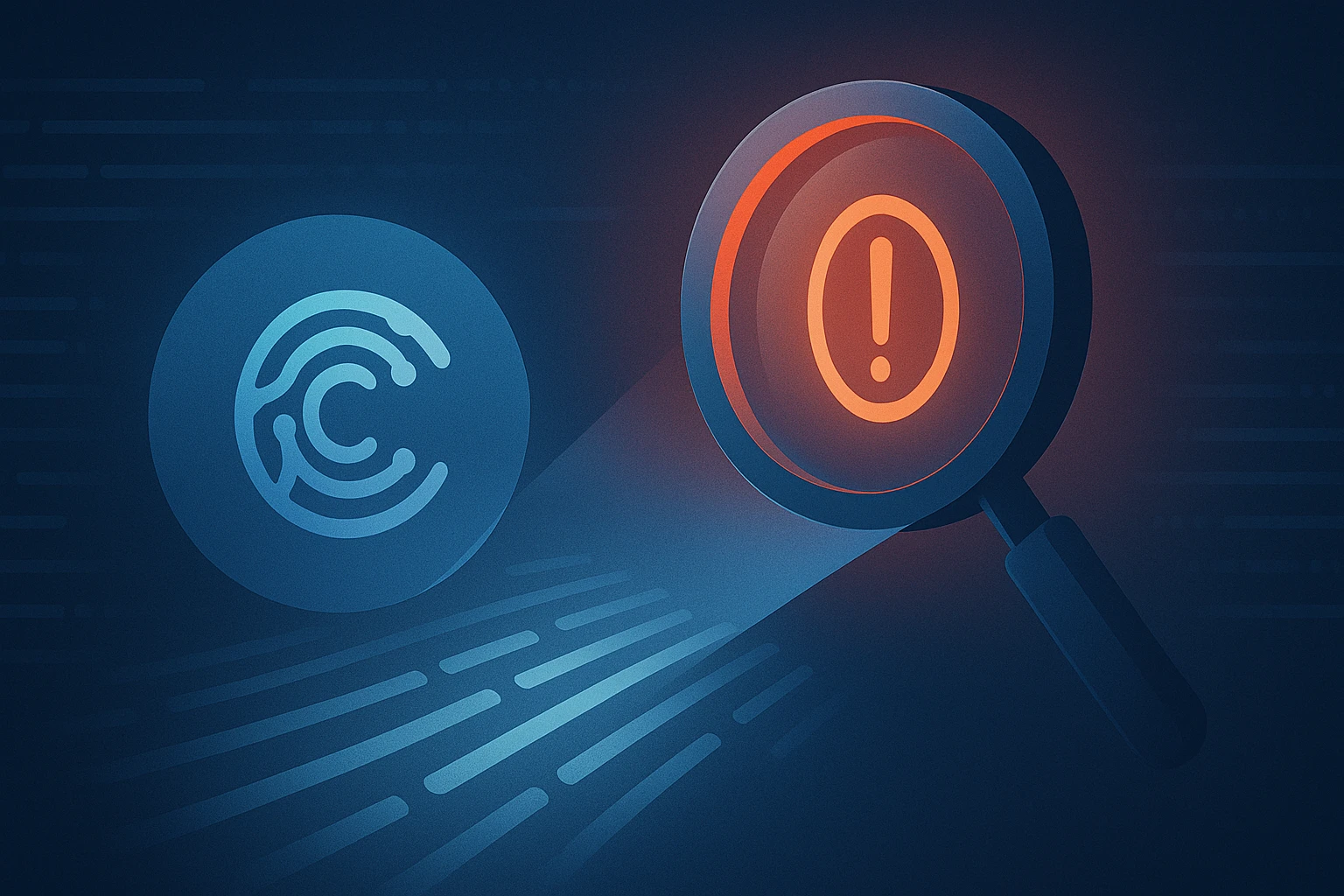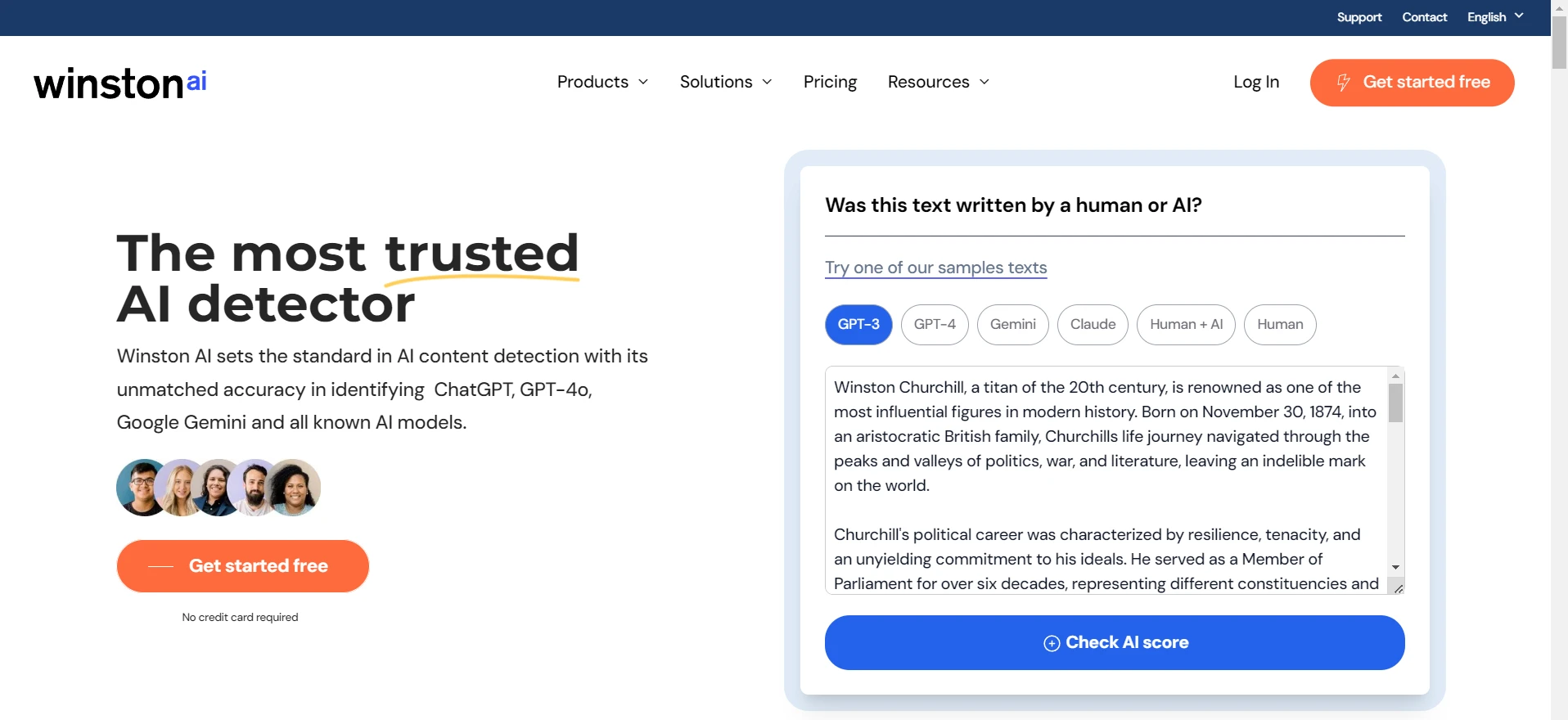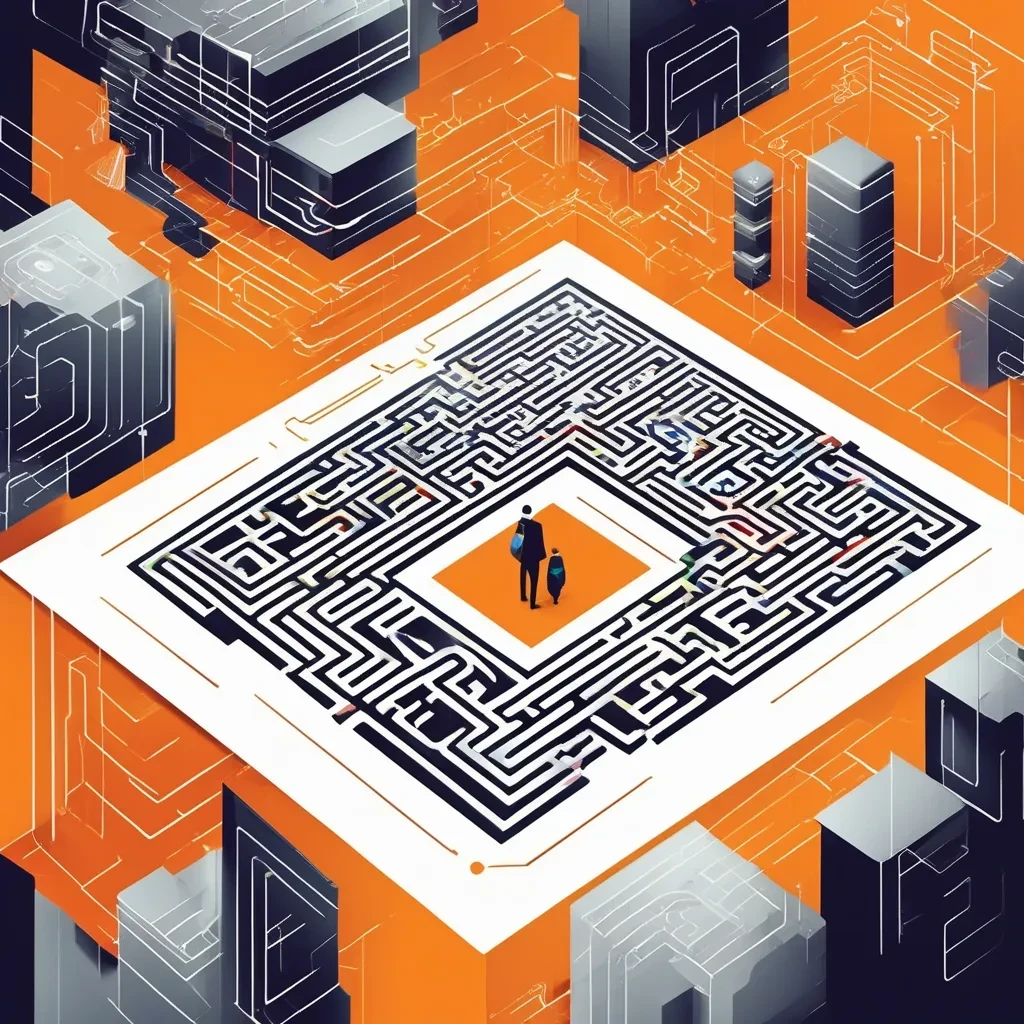As we all know it Claude AI is quite similar to ChatGPT in terms of generating text. However, can GPTZero detect it easily or not? The short answer is YES. If you want to know more about why Claude AI gets detected you can keep reading.
Why Claude AI gets detected by GPTZero?

The simple reason is just like ChatGPT, Claude is also not made to bypass AI detectors. Anthropic, the company behind Claude, never advertises bypassing AI detectors like GPTZero as a feature on their website or marketing materials. Hence, it is not designed to accomplish this task. Also, Claude is made by Anthropic and their whole brand identity relies on AI safety. So, building something that sidesteps AI detectors doesn't gives them a good look. Isn't it?
Claude is basically an AI chatbot that is pretty darn good when it comes to giving detailed text, code suggestions, or even translations. The problem is GPTZero specifically flags such “perfectly structured” text. Even if you try to add random mistakes, or use prompts that makes it sound more human-like, it’s rarely going to pass GPTZero’s detection, especially after their latest Model 3.2 update. It’s gotten super-sensitive now.
How does GPTZero works?
GPTZero uses an end-to-end deep learning system that combs through text with impressive precision. It accepts a range of file formats - plain text, DOCX, PDFs, and even image files - and can analyze up to 50 files at once. The detector employs a sentence classifier that scrutinizes content sentence by sentence, assigning probability scores that help determine if the text is human-written, AI-generated, or a blend of both.
One of its advanced features is the Paraphraser Shield, designed to counteract attempts to outsmart the system through simple paraphrasing or the use of similar-looking characters. Its output dashboard doesn’t just spit out a verdict; it offers confidence ratings labeled “uncertain,” “moderately confident,” and “highly confident.” For the “highly confident” predictions, GPTZero maintains an average error rate of under 1%.
On the technical side, GPTZero has set itself apart by introducing innovations like the first sentence-highlighting model using Hidden Markov Models (HMM) - an achievement even highlighted on Anderson Cooper 360. In extensive benchmarking across varied genres and languages, the tool has achieved an accuracy rate of 96.5% when detecting mixed-content documents. To add to that, its de-biasing techniques have helped reduce the false positive rate on TOEFL texts for ESL writers to just 1.1% since April 2022.
Even after all this when I had tested GPTZero with older Encyclopædia Britannica articles published well before 2021 using archive.org. Guess what? GPTZero flagged them as AI-generated text. So, it is not only about Claude AI or ChatGPT, sometimes it can even fail to identify real human written content. This is definitely a sign that GPTZero is messy, and it’s just not about detecting AI anymore but it might wrongly flag a lot of genuine content, too.
To add to it, I tested some of my own blog posts, which I wrote entirely by myself without any AI tools. I was shocked to see GPTZero calling them “AI-Generated.” This is especially more prevalent after GPTZero launched their Model 3.2. Earlier, it wasn’t so sensitive, but now it’s a completely different story. Humanization prompts might not be enough to pass the detection test.
Which tool is made to bypass GPTZero?
You could look at Deceptioner or other AI text bypassers if you absolutely want to slip past GPTZero’s radar. They use a variety of rewriting or paraphrasing techniques (including homoglyphs, random mistakes, etc.) precisely so that GPTZero fails to detect the text as AI. Again, due to GPTZero’s overly sensitive nature, it might still catch you sometimes. It’s a cat and mouse game.
Why is GPTZero so sensitive now?
GPTZero has improved (or worsened, depends on your perspective) their detection techniques. They probably use end-to-end deep learning approach, stylometric analysis, or some method that checks for low perplexity or burstiness. AI models (Claude, ChatGPT, GPT-4, etc.) typically produce text that is too perfect, so GPTZero’s system tries to identify those patterns.
Now, after the 3.2 update, even older text from legit sources are being flagged. So you can see that it’s not fool-proof at all. However, from the perspective of bypassing it with Claude, you really don’t have much luck if you want to rely purely on Claude’s rewriting capabilities. Claude was never built for that.
Frequently Asked Questions
Q1. Can GPTZero detect Claude AI?
Yes, GPTZero will still detect Claude. Claude does not incorporate any specialized bypass features. So, if you want to bypass GPTZero, you need a dedicated tool or just rewrite the text heavily by yourself.
Q2. Is using Claude AI plagiarism?
No, the mere act of using Claude to generate something is not plagiarism in itself. However, GPTZero might label it as AI-generated. It’s always a good practice to mention that you used Claude for any content creation if required by your institution or workplace.
Q3. Is GPTZero better than Turnitin?
Some say GPTZero is even more sensitive than Turnitin, while others claim it’s not that good. Either way, it’s definitely not bulletproof. It has been known to produce false-positives just like Turnitin.
Q4. Can Claude AI get flagged by Turnitin’s AI detector as well?
Yes, it is quite possible. Turnitin’s AI detector works in a comparable way. So, if Claude’s text gets flagged by GPTZero, there’s a good chance it might also get flagged by Turnitin or other detection tools.
The Bottom Line
Claude AI is a fantastic tool for content creation, but like ChatGPT, it’s simply not meant to fool GPTZero or pass under the AI detection radar. GPTZero has become extremely sensitive with its new update, flagging even legitimate human-written text sometimes. If you are wrongly flagged by GPTZero, you might have to consider some advanced rewriting strategies or dedicated AI text bypassers like Deceptioner. But do remember, just like any other AI detector out there, GPTZero is not perfect and it might fail spectacularly in many scenarios. If you absolutely want your content to be 100% safe from false flags, the best bet is to write it by yourself in a style that is unpredictable or distinct enough—although no one can guarantee you won’t still get flagged.


![[STUDY] Can Phrasly AI Humanizer Bypass ZeroGPT?](/static/images/can-phrasly-ai-humanizer-bypass-zerogptpng.webp)
![[STUDY] Can Phrasly AI Bypass Turnitin?](/static/images/can-phrasly-ai-bypass-turnitinpng.webp)
![[HOT TAKE] Is Winston AI or GPTZero more accurate?](/static/images/is-winston-ai-or-gptzero-more-accuratepng.webp)
![[NO NONSENSE ANSWER] Is Turndetect Permanently Down?](/static/images/is-turndetect-downpng.webp)





